The 30 Best Places to Live in Missouri: Top Cities and Towns

Missouri offers residents a diverse range of communities from bustling metropolitan areas to charming suburban towns across the Show-Me State.
The state provides affordable living costs, quality schools, and abundant recreational opportunities that attract families, young professionals, and retirees alike.
This comprehensive guide examines thirty exceptional Missouri communities that consistently rank among the state’s most desirable places to call home.
Each location offers unique advantages, from proximity to major cities like St. Louis and Kansas City to small-town charm in communities throughout the state.
Factors such as cost of living, school quality, safety, and local amenities help distinguish these communities as top choices for potential residents.
Here are the 30 best places to live in Missouri:
30. Grandview
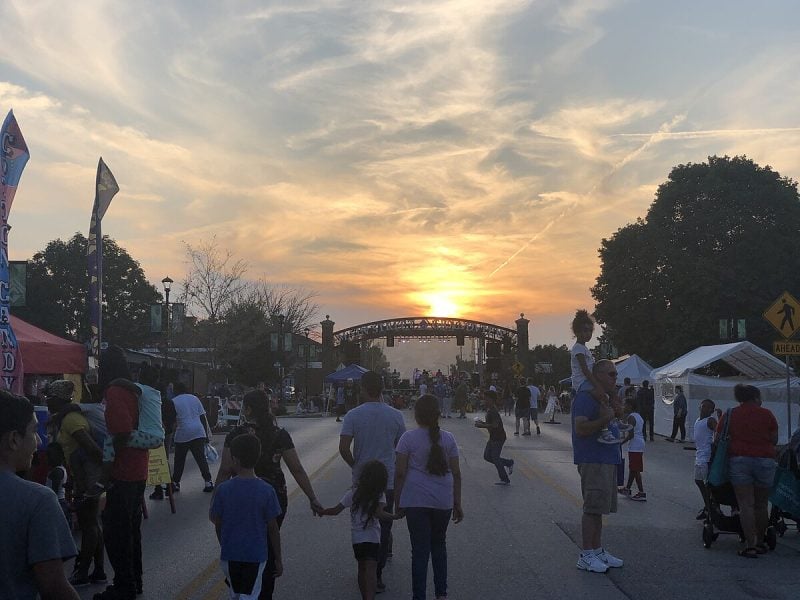
Grandview offers residents reasonable home costs and convenient access to Kansas City’s core. The city features 200 acres of parkland and a lively downtown district that attracts families and young professionals.
The community ranks as the most diverse place to live in Missouri. It also holds the top position among diverse suburbs statewide. This diversity creates a welcoming environment for residents from various backgrounds.
Housing remains affordable compared to nearby metropolitan areas. The comfortable living income requirement sits around $37,800 annually. Home prices stay reasonable while offering proximity to urban amenities.
Safety varies by neighborhood within Grandview. Some areas provide better security than others. Residents can find neighborhoods with lower crime rates by researching specific locations.
The city combines small-town charm with big-city accessibility. Its location provides easy commuting options to Kansas City while maintaining a distinct community identity.
29. Eureka

Eureka sits in St. Louis County with a population of approximately 11,000 residents. The city maintains a sparse suburban atmosphere west of St. Louis.
The community attracts families seeking quality neighborhoods and homeownership opportunities. Most residents own their homes rather than rent.
Eureka’s poverty rate stands at just 0.6%, significantly below the national average. The typical household earns $112,750 annually, well above Missouri’s median income.
Residents enjoy access to numerous parks and recreational facilities. Six Flags theme park provides nearby entertainment options for families.
The city offers various leisure activities including golf courses and local attractions. Its proximity to St. Louis expands employment and cultural opportunities.
Eureka consistently ranks among Missouri’s better places to live. The area provides suburban comfort while maintaining reasonable access to urban amenities.
28. Hazelwood
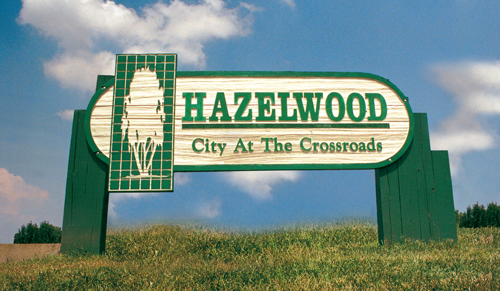
Hazelwood is a suburban community in St. Louis County with a population of 25,214 residents. The city offers a dense suburban atmosphere where most residents own their homes.
The community attracts both families and young professionals seeking proximity to St. Louis. Hazelwood provides numerous parks and recreational spaces for outdoor activities.
Weather conditions remain favorable year-round with mild winters and warm summers. The climate makes outdoor living comfortable across all seasons.
Housing costs stay reasonable compared to other St. Louis metropolitan areas. The growing population brings diversity and welcoming neighborhoods.
Hazelwood’s location provides convenient access to St. Louis employment centers and amenities. Residents benefit from suburban living while maintaining urban connectivity.
The city combines affordable housing options with quality community features. Parks and recreational facilities support active lifestyles for residents of all ages.
27. Oakville

Oakville ranks as a top suburban community in St. Louis County with a population of 35,166 residents. The city offers a sparse suburban atmosphere where most residents own their homes.
Located along the Missouri-Illinois border, Oakville provides easy access to St. Louis while maintaining its quiet residential character. Young professionals and retirees make up much of the population.
The community boasts highly rated public schools and maintains a crime rate 35% lower than the national average. Tree-lined neighborhoods create an appealing residential environment.
Residents enjoy proximity to cultural attractions like the Lewis and Clark Boathouse & Nature Center and Laumeier Sculpture Park. Shopping options include South County Center and various local establishments.
Home prices exceed Missouri’s state average of $194,908, reflecting the area’s desirability. The strong sense of community and stable neighborhoods attract families seeking suburban living near St. Louis.
26. Parkville
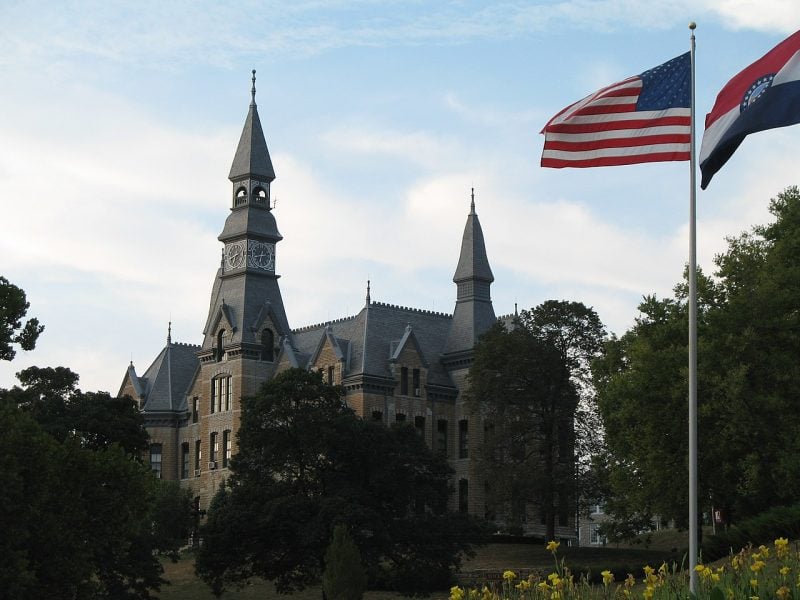
Parkville stands out as one of Missouri’s most desirable communities with a population of 7,153. The city has earned recognition as Kansas City’s “Most Charming Community” by multiple publications.
Crime rates in Parkville are 31% lower than the Missouri state average. This creates a safe environment that attracts families and professionals alike.
The community boasts high household incomes with many residents working in management and technology sectors. Home prices exceed the state average of $194,908, reflecting the area’s desirability.
Cultural events define much of Parkville’s character. The annual Parkville Days festival features parades, live music, and local vendors that bring the community together.
The Parkville Nature Sanctuary offers residents outdoor recreation opportunities. Trails and wildlife viewing provide natural escapes within the city limits.
25. Riverview

Riverview offers residents affordable housing costs well below Missouri’s state average of $194,908. This small town provides a rural lifestyle while maintaining access to urban amenities.
The community scores highly in housing affordability and weather conditions, both rating 8 out of 10 according to BestPlaces. Amenities receive a solid 7 out of 10 rating.
Riverview’s location along the Missouri-Illinois border near the Mississippi River provides scenic surroundings. Residents enjoy small-town living with easy access to larger metropolitan areas.
The town ranks as livable despite its modest size. Local amenities include restaurants, grocery stores, and parks that serve the community’s daily needs.
Riverview combines rural charm with practical conveniences for those seeking an affordable Missouri hometown.
24. New Florence
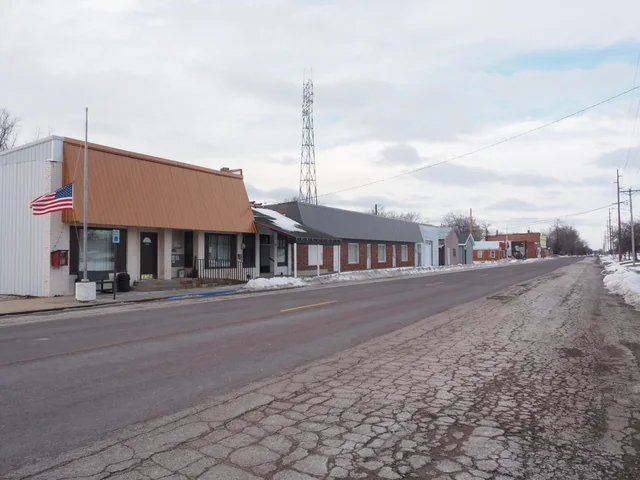
Florence sits in Morgan County along the Missouri River. This small community offers residents a quiet rural lifestyle with scenic river views.
The town provides easy access to outdoor recreation opportunities. Residents enjoy fishing, boating, and hiking along the Missouri River corridor.
Florence maintains a low cost of living compared to larger Missouri cities. Housing prices remain affordable for families and retirees seeking small-town living.
The community features basic amenities including local businesses and services. Residents typically travel to nearby larger towns for additional shopping and dining options.
Florence appeals to those who prefer a slower pace of life. The town offers a close-knit community atmosphere where neighbors know each other.
Transportation access connects Florence to other parts of central Missouri. The location provides reasonable driving distances to Jefferson City and Columbia for employment and entertainment opportunities.
23. Des Peres
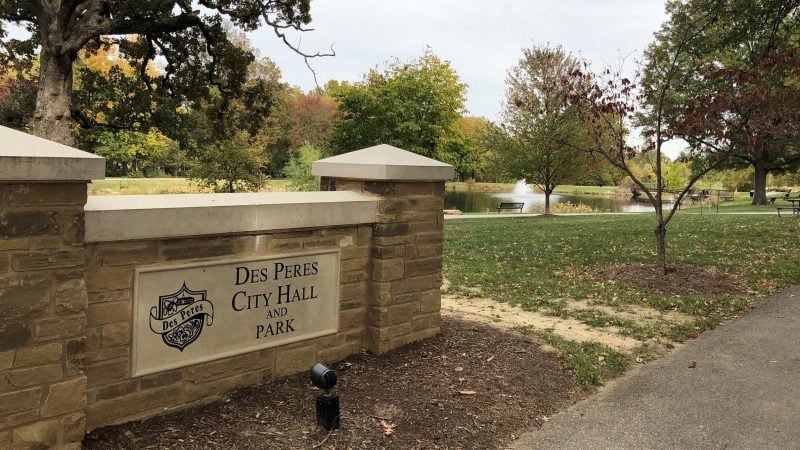
Des Peres stands out as one of Missouri’s premier suburban communities in St. Louis County. The city earns a livability score of 76 out of 100, reflecting its strong appeal for residents.
Safety ranks among Des Peres’ top advantages. Crime rates remain well below state averages, making it one of Missouri’s safest cities.
The community offers extensive amenities including diverse restaurants, coffee shops, parks, and entertainment venues. Shopping opportunities are particularly abundant in this West County location.
Home values exceed Missouri’s state average of $194,908, reflecting the area’s desirability. The higher cost corresponds with the quality of life and amenities available.
Families find Des Peres especially attractive due to child-friendly amenities and educational opportunities. The location provides easy access to St. Louis professional sports teams and cultural attractions.
22. Bridgeton
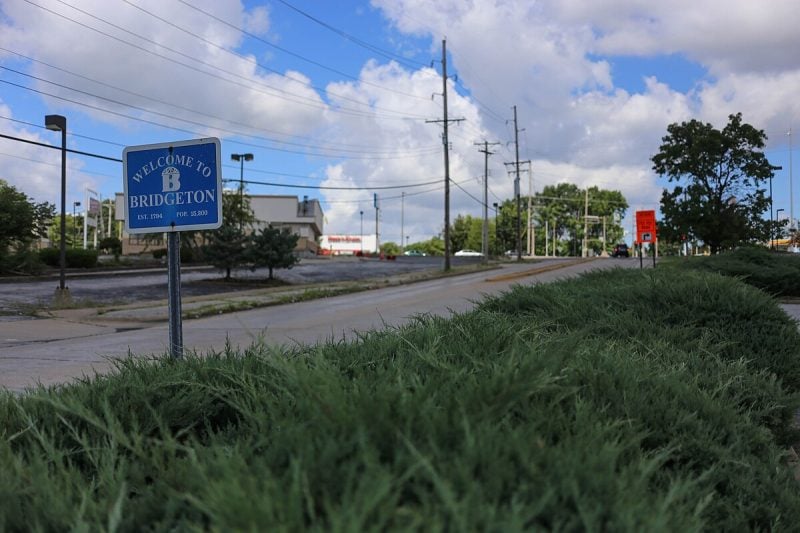
Bridgeton is a suburb of St. Louis with a population of 11,372 residents. The city sits in St. Louis County and offers residents a sparse suburban feel.
Most residents in Bridgeton own their homes. The community features numerous restaurants and parks for residents to enjoy.
Bridgeton ranks as the 13th most diverse suburb in Missouri out of 147 suburbs. It also places 25th out of 351 for the most diverse places to live statewide.
The city ranks 35th out of 147 for best suburbs for young professionals in Missouri. This makes it an attractive option for career-focused individuals.
Bridgeton receives a livability score of 54 out of 100. This score places the city in the 21st percentile when compared to other cities across the state.
The quality of neighborhoods within Bridgeton varies significantly throughout the community.
21. Warrensburg
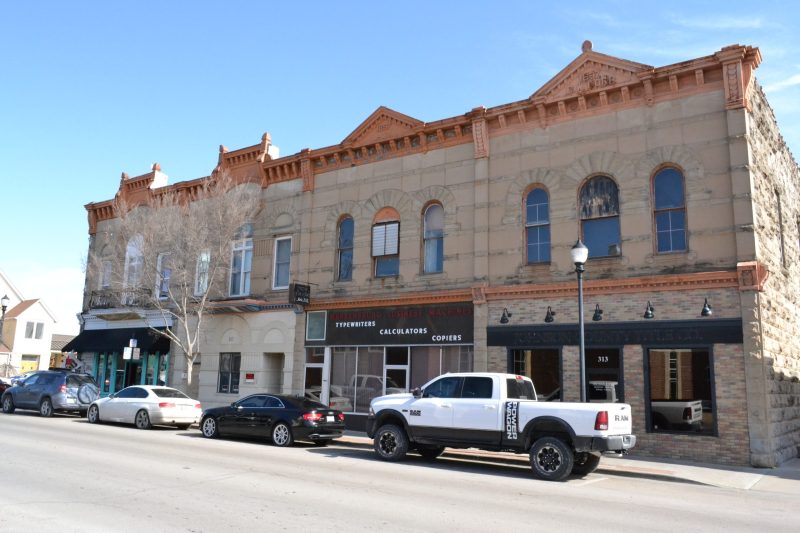
Warrensburg is home to approximately 19,400 residents in Johnson County. The city offers a dense suburban atmosphere where most residents rent their homes.
The median home price sits around $224,000, which aligns closely with Missouri’s state average. The unemployment rate remains relatively low at 4.7 percent.
Young professionals make up a significant portion of the population. The median age is 27.3 years, reflecting the city’s youthful demographic.
Warrensburg provides numerous parks and recreational opportunities for residents. The public school system performs above average compared to other Missouri districts.
The city maintains a moderate cost of living while offering essential amenities. Local attractions and facilities contribute to its appeal as a residential choice.
Political leanings tend to be conservative among the resident population. The community offers stability for both renters and homeowners seeking suburban living.
20. Belton
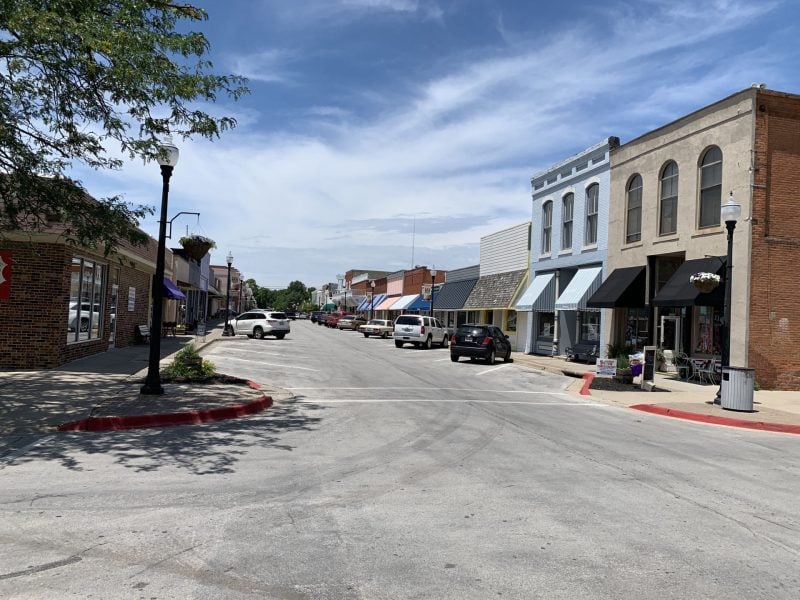
Belton sits in Cass County, Missouri, with a population of approximately 23,568 residents. The city offers a cost of living index of 83, well below the national average of 100.
The typical household earns $65,667 annually, slightly below the national median. Belton maintains a poverty rate of 10.1%, which is 28% lower than the national average.
Residents enjoy access to local attractions like The Black Archives Museum of Art & Culture. Fleming Park provides scenic views and hiking trails for outdoor enthusiasts.
The city features diverse neighborhoods with varying home values and quality of life indicators. Crime rates tend to be lower in the more desirable residential areas.
Belton combines suburban living with convenient access to cultural and recreational activities. The community offers amenities suitable for families and individuals seeking affordable Missouri living.
19. Gladstone
Gladstone stands out as one of Missouri’s premier suburban communities. This Clay County city serves 27,069 residents just north of Kansas City.
The community offers a dense suburban atmosphere where most residents own their homes. Tree-lined neighborhoods provide peaceful living while maintaining easy access to urban amenities.
Gladstone ranks #37 among Missouri cities with a livability score of 75 out of 100. The city combines small-town warmth with big-city convenience.
Residents enjoy numerous parks and recreational facilities throughout the area. Community events foster strong neighborhood connections and civic engagement.
The housing market reflects the area’s desirability, with home values indicating quality neighborhoods. Crime rates remain relatively low compared to regional averages.
Gladstone’s location provides quick commutes to downtown Kansas City while offering suburban tranquility. The city maintains a strong sense of safety and community belonging.
18. Florissant
Florissant serves as a well-established suburb of St. Louis in St. Louis County. The city maintains a population of approximately 51,915 residents who enjoy a sparse suburban atmosphere.
Home prices in Florissant remain below Missouri’s state average of $194,908. The typical household earns $58,769 annually, which falls below the national median of $67,500.
The community features several distinct neighborhoods including Old Town with historic homes and Paddock Forest with tree-lined streets. Cross Keys offers newer developments near shopping centers.
Florissant attracts families and young professionals who appreciate the numerous parks throughout the area. Most residents own their homes rather than rent.
The poverty rate stands at 10.2%, which is 27% lower than the national average. This suburban community provides residents with established amenities while maintaining proximity to St. Louis.
17. St. Peters
St. Peters ranks as one of Missouri’s top suburban destinations with a population of 58,200. The city sits in St. Charles County and offers residents a sparse suburban atmosphere where most people own their homes.
The community provides an excellent balance of small-town charm and modern conveniences. Residents enjoy access to numerous parks throughout the area.
St. Peters features a rapidly expanding business park spanning over 4 million square feet. This development includes office space, retail locations, and warehouse facilities that support local employment opportunities.
The city is actively developing its new Town Centre area. This downtown-style district will include hotels, apartments, retail shops, dining establishments, and outdoor entertainment venues.
Housing quality varies significantly across different neighborhoods within St. Peters. The best areas are typically determined by median home values and market demand from prospective residents.
16. Webster Groves
Webster Groves stands out as one of Missouri’s premier communities. The city sits just 15 minutes from downtown St. Louis, offering convenient access to urban amenities.
This leafy suburb provides residents with a walkable downtown area filled with cozy restaurants and unique boutiques. The community maintains a close-knit atmosphere that attracts families and professionals alike.
Education remains a strong draw for Webster Groves. The city offers quality public schools and access to Webster University.
Housing prices exceed Missouri’s state average of $194,908, reflecting the area’s desirability. The higher cost comes with benefits including low crime rates and excellent amenities.
Residents enjoy five city parks and numerous recreational opportunities. The Old Orchard Shopping Center provides convenient retail options.
Webster Groves has earned recognition as one of the best places to live in Missouri through multiple ranking organizations.
15. Raymore
Raymore ranks as the 97th best place to live in Missouri according to BestPlaces. The city offers residents a combination of safety and economic stability that makes it attractive for families.
The community maintains low unemployment and crime rates. These factors contribute to Raymore’s reputation as a family-friendly destination for those considering relocation.
Education stands out as a particular strength in Raymore. The area boasts high graduation rates that reflect the quality of local schools and educational opportunities.
Residents enjoy access to various amenities including restaurants and retail establishments. The location also provides convenient access to outdoor activities such as hiking, camping, and fishing.
Housing quality varies significantly across different neighborhoods within Raymore. The best areas tend to correlate with higher median home values and enhanced quality of life indicators.
14. Maryland Heights
Maryland Heights stands out as one of Missouri’s premier suburban communities. Located in St. Louis County, this city of approximately 28,000 residents offers an ideal blend of amenities and affordability.
The community boasts a poverty rate of just 7.4%, significantly below the national average. Typical household income reaches $69,973, exceeding national medians and reflecting the area’s economic stability.
Residents enjoy access to the expansive 2,000-acre Creve Coeur Park. The park provides opportunities for kayaking, sailing, and hiking, making it a centerpiece of outdoor recreation.
Maryland Heights maintains a dense suburban character where most residents own their homes. The city features numerous restaurants and parks that contribute to its family-friendly atmosphere.
Housing costs remain competitive compared to similar-sized cities nationwide. Home prices align closely with Missouri’s state average, providing good value for prospective residents.
13. Liberty
Liberty stands out as one of Missouri’s most affordable places to live. The city ranks number one on national lists for lowest cost of living index.
Located in Clay County, Liberty maintains a population of approximately 31,761 residents. The typical household earns $78,184 annually, which exceeds the national median income.
The city’s poverty rate sits at just 7%, significantly lower than national averages. Housing affordability remains a key attraction for new residents.
Liberty excels in multiple quality-of-life categories. The city scores well for education quality, low crime rates, and good air quality.
Family Circle Magazine recognized Liberty as one of the “Best Places to Raise a Family.” Money Magazine also named it among the “Best Places to Retire.”
The community offers strong economic opportunities combined with safe neighborhoods. Residents benefit from quality schools and various recreational activities throughout the area.
12. Independence
Independence offers residents a blend of historical significance and modern amenities. The city maintains a population of approximately 117,000 people.
Housing costs remain affordable compared to national averages. The median household income sits at $50,797 annually.
Several neighborhoods stand out for their unique characteristics. Englewood features a revitalized arts district within its historic boundaries. Susquehanna provides quiet residential streets with well-maintained properties.
Fairmount combines historic homes with newer construction at reasonable prices. Glendale attracts families seeking good school districts and community atmosphere.
The William Chrisman area draws residents who value proximity to quality educational institutions. Each neighborhood offers distinct advantages for different lifestyle preferences.
Independence receives positive ratings for its relatively low cost of living compared to other American cities. The community balances cultural attractions with practical daily amenities for residents.
11. Wildwood
Wildwood ranks as one of Missouri’s premier places to live, earning recognition as the top St. Louis suburb for families in 2024. This St. Louis County community combines small-town charm with modern amenities.
The city offers residents a rural atmosphere while maintaining access to urban conveniences. Most residents own their homes in this well-established suburb of 35,168 people.
Wildwood excels in several key areas including low crime rates, quality education, and housing affordability. The community provides excellent schools that attract families seeking educational opportunities for their children.
Natural surroundings define much of Wildwood’s appeal. Residents enjoy numerous parks and outdoor recreational facilities, including nearby Babler State Park and local swimming options.
The area features diverse neighborhoods with varying home values and characteristics. Shopping centers and entertainment venues provide convenient access to retail and dining options for residents.
10. Ballwin
Ballwin stands out as one of Missouri’s premier suburban communities. This St. Louis suburb houses approximately 30,400 residents who enjoy a high quality of life.
The city earned recognition from Money Magazine as “One of America’s Best Places to Live” in 2005, 2011, and 2013. These accolades reflect Ballwin’s commitment to excellent municipal services and community programs.
Residents benefit from top-rated schools and a welcoming community atmosphere. The area offers numerous restaurants, coffee shops, and parks that enhance daily living.
Ballwin ranks 37th out of 6,804 best suburbs nationwide according to recent data. The typical household earns $97,174 annually, significantly above the national median of $67,500.
The poverty rate sits at just 4%, which is 71% lower than the national average. Most residents own their homes in this sparse suburban environment that maintains easy access to St. Louis amenities.
9. Blue Springs
Blue Springs ranks as one of Missouri’s top places to live, consistently earning national recognition. The city took the top spot in HomesUnion’s national ranking two years running.
Located in Jackson County, this Kansas City suburb has approximately 55,000 residents. The community offers a sparse suburban feel where most residents own their homes.
Blue Springs excels in multiple categories that matter to families. The city receives high rankings for amenities, low crime rates, and quality public schools. Cost of living and housing remain reasonable compared to other top-rated areas.
The Route 7/E Wyatt Road neighborhood stands out with a median home price of $290,000. This area features newer single-family homes and townhouses with strong curb appeal.
Residents enjoy abundant parks throughout the city. Blue Springs successfully combines small-town charm with modern conveniences, making it attractive to families seeking suburban living near Kansas City.
8. St. Charles
St. Charles ranks as Missouri’s 8th best place to live according to BestPlaces.net. The city served as Missouri’s first state capital and continues to attract residents with its blend of history and modern amenities.
Time Magazine recently named St. Charles the 32nd best place to live in America. Money Magazine also recognized it as one of the top places to live nationwide in their annual rankings.
The city offers residents low crime rates and quality neighborhoods. Home values vary significantly across different areas, providing housing options for various budgets.
St. Charles provides excellent public schools and local amenities. The historic downtown district features shops, restaurants, and cultural attractions along the Missouri River.
Located in St. Charles County, one of Missouri’s fastest-growing regions, the city benefits from proximity to St. Louis while maintaining its small-town character.
7. Chesterfield
Chesterfield stands as the largest city in west St. Louis County and ranks among Missouri’s top living destinations. The city earned recognition as the second-best place to live in the state.
Located in the St. Louis Metropolitan area, Chesterfield offers residents excellent schools and a strong local economy. The community has built a reputation as the “City of Volunteers.”
Housing options include colonial, ranch-style, and new traditional homes built primarily in the mid-to-late 20th century. Neighborhoods feature a mix of housing styles and price ranges.
The Missouri River provides water recreation opportunities for residents. Faust Park and the Butterfly House offer additional outdoor activities.
Chesterfield maintains low crime rates and high quality of life standards. The city provides easy access to shopping at Chesterfield Mall and various local amenities throughout the area.
6. Springfield
Springfield ranks among Missouri’s top places to live according to recent U.S. News & World Report rankings. The city sits in the heart of the Ozarks region, offering residents access to natural attractions and outdoor recreation.
The area features several desirable neighborhoods. Rountree provides historic charm near Missouri State University with older homes and community character. Sequiota Park offers diverse housing options surrounded by natural beauty.
Southern Hills attracts families with larger homes and spacious lots. Battlefield, Fremont Hills, and nearby communities like Ozark, Nixa, and Republic provide additional living options within the greater Springfield area.
Springfield combines cultural attractions including art galleries and performing arts venues with practical amenities. The cost of living remains reasonable while maintaining good public schools and lower crime rates in many neighborhoods.
Housing quality varies significantly across different areas, with some neighborhoods commanding higher home values based on location and amenities.
5. O’Fallon
O’Fallon ranks as Missouri’s top-rated city and sits 35 miles from downtown St. Louis. The city earned 29th place nationally among best places to live.
This St. Charles County community offers a quintessential midwestern atmosphere. About 80% of residents own their homes, creating stable neighborhoods throughout the area.
The city provides strong job opportunities and maintains low crime rates. Quality educational systems serve families who choose to settle here.
Downtown O’Fallon features historic charm with older homes and small-town character. The Highway K Corridor showcases newer developments with convenient shopping and dining access.
Housing options vary significantly across different neighborhoods. The real estate market reflects diverse price points and home styles to accommodate various budgets.
O’Fallon combines suburban convenience with proximity to St. Louis amenities. The location provides easy access to metropolitan resources while maintaining community-focused living.
4. Kansas City
Kansas City stands as Missouri’s largest city and offers residents exceptional quality of life. The city ranks fourth in safety and sixth in overall livability among US cities according to recent data.
The metro area features diverse neighborhoods that cater to different lifestyles. Brookside attracts residents with its local shops and strong community atmosphere. Waldo provides affordable housing options alongside a growing food scene.
River Market showcases the city’s historic character through its farmers market and loft-style living spaces. The area maintains its vibrant downtown appeal while offering modern amenities.
Kansas City has earned recognition for career opportunities and educational quality. The city’s artistic culture provides residents with museums, galleries, and cultural events throughout the year.
Housing options range from urban lofts to suburban family homes. The cost of living remains reasonable compared to other major metropolitan areas, making it accessible for various income levels.
3. St. Louis
St. Louis stands as Missouri’s second-largest city and offers diverse living options across numerous neighborhoods and suburbs. The metropolitan area provides residents with varied choices from urban districts to family-friendly suburban communities.
The city features established school districts and educational institutions throughout the region. Many neighborhoods offer different price points and housing styles to accommodate various budgets and preferences.
St. Louis maintains cultural attractions, dining options, and recreational facilities. The area includes parks, museums, and entertainment venues that serve residents across different age groups.
Transportation options connect various parts of the metropolitan area. The region’s economy supports multiple industries and employment opportunities.
Housing markets vary significantly between neighborhoods, with some areas commanding higher prices due to amenities and location factors. Crime rates and community safety levels differ across districts within the city and surrounding suburbs.
2. Lee’s Summit
Lee’s Summit ranks as one of Missouri’s premier places to live. This upscale suburban community sits adjacent to Kansas City with a population just over 100,000.
The city offers excellent access to big city amenities while maintaining suburban tranquility. Residents can easily commute to Kansas City for work or entertainment.
Lee’s Summit earned a Quality of Life score of 8.3 out of 10 stars from BestPlaces. The city ranks 13th among the best cities nationwide and first in Missouri for job opportunities.
Crime rates remain notably low compared to other Missouri cities. The job market provides approximately six available positions for every resident.
Popular neighborhoods include New Longview, a master-planned community with diverse housing options. Winterset features well-maintained homes and community parks. Downtown Lee’s Summit provides urban living with historic character.
1. Columbia
Columbia stands as Missouri’s fifth-best place to live according to recent rankings. The city serves as home to the University of Missouri, creating a vibrant college town atmosphere with strong cultural offerings.
The East Campus neighborhood attracts students and young professionals with its proximity to the university. Thornbrook provides upscale living with newer homes and top-rated schools for families seeking quality education options.
Downtown Columbia offers urban amenities including restaurants, shops, and cultural attractions. The Shepard Boulevard area delivers family-friendly living with good schools and nearby parks.
Columbia’s real estate market demonstrates stability with low turnover rates. The city’s median household income reaches $53,447, though the poverty rate sits at 20.2%.
The community benefits from a mix of residential options and strong educational infrastructure. Columbia’s progressive college town character combined with practical amenities makes it an attractive destination for various demographics.
Key Factors to Consider When Choosing Where to Live in Missouri
Missouri residents must evaluate several critical factors that directly impact their quality of life and financial well-being. The state’s diverse economy, education systems, living costs, and community characteristics vary significantly across different regions.
Cost of Living
Housing costs represent the largest expense for most Missouri residents. The median home price varies dramatically between rural areas and major metropolitan regions like St. Louis and Kansas City.
Housing Expenses:
-
Rural counties: $80,000-$150,000 median home price
-
Suburban areas: $200,000-$350,000 median home price
-
Urban centers: $180,000-$400,000+ median home price
Utilities in Missouri average 8% below the national average due to abundant energy resources. Property taxes remain relatively low compared to neighboring states, with effective rates ranging from 0.9% to 1.2% of assessed value.
Transportation costs depend heavily on location. Urban areas offer public transit options that reduce vehicle dependency. Rural residents typically face higher transportation expenses due to longer commutes and limited public transportation.
Job Market and Economic Opportunities
Missouri’s economy centers on manufacturing, agriculture, healthcare, and financial services. Major employers include Boeing, Monsanto, Express Scripts, and numerous healthcare systems.
Employment Hubs:
-
St. Louis: Healthcare, biotechnology, financial services
-
Kansas City: Manufacturing, logistics, telecommunications
-
Springfield: Healthcare, education, manufacturing
-
Columbia: Education, healthcare, government
The state’s unemployment rate typically tracks below national averages. Manufacturing jobs offer competitive wages but require specific skills. Healthcare positions show strong growth projections through 2030.
Technology sector growth remains concentrated in metropolitan areas. Rural regions depend more heavily on agriculture and small-scale manufacturing.
Quality of Schools and Education
Missouri’s education system shows significant variation between districts. Wealthy suburban districts consistently outperform state averages, while rural and urban districts face funding challenges.
Top-Rated School Districts:
-
Clayton School District (St. Louis County)
-
Blue Springs R-IV (Jackson County)
-
Rockwood School District (St. Louis County)
-
Park Hill School District (Platte County)
The state operates several prestigious universities including the University of Missouri system, Washington University, and Saint Louis University. Community colleges provide accessible higher education options throughout the state.
Private school options exist primarily in metropolitan areas. Homeschooling regulations remain relatively flexible compared to other states.
Community Life and Local Culture
Missouri communities reflect diverse cultural influences from Midwestern farming traditions to urban metropolitan lifestyles. Small towns emphasize close-knit relationships and community involvement.
Cultural Attractions:
-
Professional sports teams in St. Louis and Kansas City
-
Live music venues and festivals statewide
-
State parks and outdoor recreation opportunities
-
Historic sites and museums
Rural areas offer slower-paced living with strong agricultural connections. Suburban communities provide family-friendly environments with organized activities and recreational facilities.
Urban areas feature diverse dining, entertainment, and cultural options. Each region maintains distinct characteristics shaped by local history and geography.
Religious communities play significant roles in many Missouri towns. Civic organizations and volunteer groups provide social connections and community service opportunities.
Understanding Missouri’s Regional Differences
Missouri’s diverse landscape creates distinct living experiences across the state. From metropolitan centers like St. Louis and Kansas City to small agricultural towns, residents encounter vastly different lifestyles, amenities, and geographic conditions.
Urban vs. Rural Lifestyles
Major metropolitan areas in Missouri include St. Louis and Kansas City, which offer extensive job markets, cultural attractions, and educational institutions. These cities provide access to museums, professional sports teams, and diverse dining options.
Suburban communities like Lee’s Summit and Columbia combine proximity to urban amenities with family-friendly environments. These areas typically feature better-funded school districts and newer housing developments.
Rural Missouri spans much of the state’s agricultural regions. Small towns often center around farming communities with populations under 5,000 residents.
Rural areas offer lower housing costs and property taxes. However, they provide limited access to healthcare facilities, shopping centers, and employment opportunities outside of agriculture or manufacturing.
Internet connectivity and cell phone coverage can be inconsistent in remote areas. Public transportation is virtually nonexistent in rural regions, making personal vehicles essential for daily activities.
Climate and Geography Across the State
Missouri experiences a continental climate with distinct seasonal variations. Summer temperatures typically reach 85-90°F, while winter lows drop to 20-30°F statewide.
The northern regions receive more snowfall, averaging 15-20 inches annually. Southern Missouri sees milder winters with occasional ice storms affecting travel and utilities.
Geographic features vary significantly across the state. The Missouri River divides northern plains from southern hill country.
The Ozark Mountains in southern Missouri create rolling terrain with forests and natural springs. This region attracts outdoor enthusiasts for hiking, fishing, and camping activities.
Northern Missouri consists of flat prairie land ideal for corn and soybean farming. The Mississippi River forms the eastern border, supporting river commerce and transportation.





